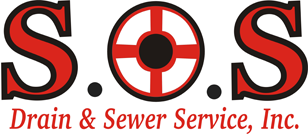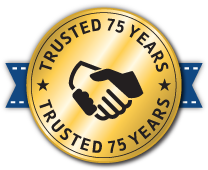The cost of having your drains cleaned in Minnesota can vary depending on several factors such as the severity of the clog, the location of the drain, and the service provider you choose. Typically, drain cleaning services in Minnesota can range from $100 to $500 or more.
For simple and minor clogs that can be easily resolved, you might find services on the lower end of the price range. However, if the clog is severe and requires extensive work or if there are additional complications, the cost can increase.
It’s important to note that the above cost estimates are general ranges and can vary significantly based on various factors. It is advisable to contact SOS drain cleaning service in Minnesota to get accurate quotes specific to your situation. They can assess the problem and provide you with a more precise cost estimate.
What Effects The Cost To Clean A Drain?
Several factors can affect the cost to clean a drain. Here are some of the key factors:
- Severity of the clog: The severity of the clog can impact the cost. If it is a minor clog that can be easily resolved, the cost will likely be lower. However, if the clog is severe and requires more extensive work, such as using specialized equipment or dismantling parts of the plumbing system, the cost can increase.
- Location of the drain: The location of the drain can also affect the cost. Different drains in your home or property may have varying levels of accessibility. If the drain is easily accessible, such as a kitchen sink drain, it may be simpler and less expensive to clean. However, if the drain is located in a hard-to-reach area or requires additional efforts to access, such as a sewer line or a drain in a crawl space, it may require more time and labor, thereby increasing the cost.
- Type of drain cleaning method: There are various methods to clean drains, including snaking, hydro jetting, or using chemical solutions. The specific method employed can impact the cost. For instance, hydro jetting, which uses high-pressure water to clear the pipes, may be more expensive than snaking.
- Additional complications: If there are additional complications or underlying issues with the plumbing system, such as damaged pipes or tree root intrusion, addressing these issues can increase the cost of drain cleaning. In such cases, the service provider may need to perform repairs or offer additional services to resolve the problem effectively.
- Service provider: The cost can also vary depending on the service provider you choose. Different companies or contractors may have different pricing structures, so it’s advisable to obtain multiple quotes to compare prices and services before making a decision.
Remember, these factors are general considerations and can vary depending on your specific situation and location. It’s recommended to consult with local plumbing or drain cleaning professionals who can assess the situation and provide you with an accurate cost estimate based on your needs.
What Are Common Types of Drain Clog Problems?
There are several common types of drain clog problems that can occur in residential or commercial plumbing systems. Here are a few examples:
- Food Waste Clogs: In kitchen drains, one of the most common types of clogs is caused by food waste. Accumulated grease, oil, and food particles can build up over time, leading to blockages in the kitchen sink drain. This can result in slow drainage or complete blockage.
- Hair Clogs: In bathroom drains, particularly in showers or bathtub drains, hair clogs are a frequent issue. As hair accumulates and combines with soap residue and other debris, it can create stubborn clogs that impede water flow.
- Soap Scum and Mineral Buildup: Over time, soap scum, mineral deposits, and other residues can accumulate on the walls of drain pipes, causing a reduced diameter and hindering water flow. This buildup can lead to slow drains or complete blockages if not addressed.
- Foreign Objects: Sometimes, objects that should not be flushed or washed down drains end up causing clogs. Items like sanitary products, baby wipes, cotton balls, and excessive toilet paper can get stuck in the drain pipes, causing blockages.
- Tree Root Intrusion: In outdoor drains, such as sewer lines or underground drainage systems, tree root intrusion can occur. Tree roots are attracted to moisture, and they can penetrate through small cracks or gaps in the pipes, causing blockages and potentially damaging the plumbing system.
- Pipe Misalignment or Damage: Drain clogs can also occur due to misaligned or damaged pipes. Shifted or broken pipes can impede proper water flow, leading to backups and clogs.
It’s important to note that these are just a few examples of common drain clog problems. Each situation can vary, and the cause of the clog may require a specific approach for effective cleaning and resolution. If you’re experiencing persistent or severe drain clogs, it’s advisable to consult a professional plumber or drain cleaning service to identify the underlying cause and provide appropriate solutions.



